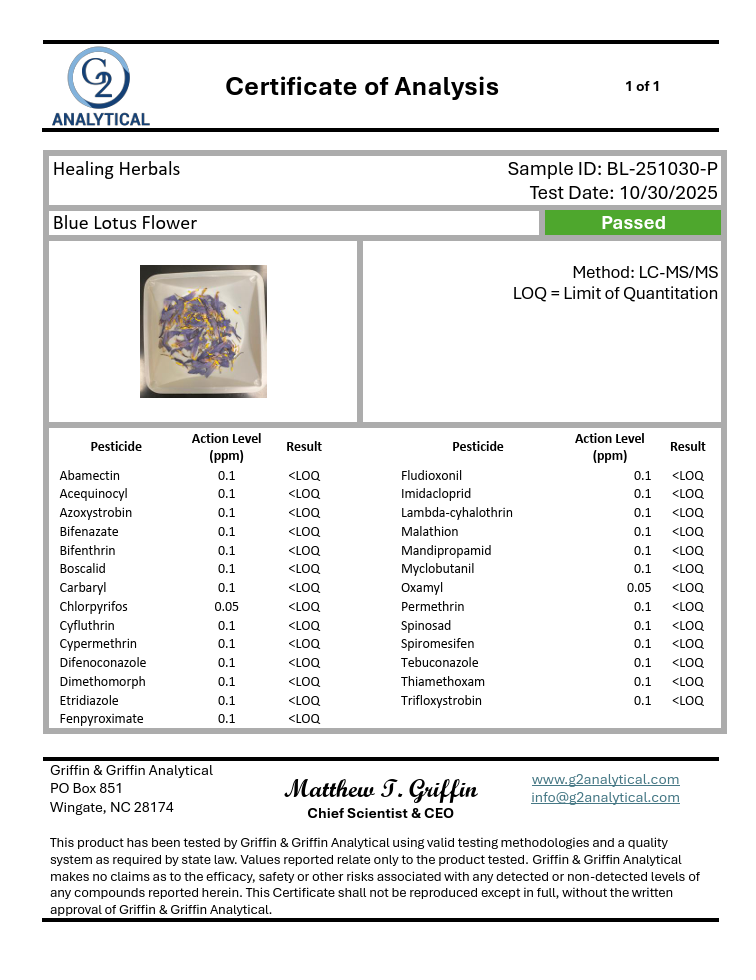
Healing Herbals
Organic Blue Lotus Petals And Stamens
Organic Blue Lotus Petals And Stamens
Couldn't load pickup availability
Organic Blue Lotus Petals and Stamens
Product Description: Our Blue Lotus (Nymphaea caerulea) petals and stamens are carefully sourced from Sri Lanka, offering a premium selection of this cherished botanical. Only the flower’s delicate petals and stamens are used, providing a refined tea with subtle floral and earthy notes.
History and Tradition:
Blue Lotus has a long history of reverence, most famously in ancient Egypt, where it was valued in spiritual and ceremonial settings. Today, it continues to be appreciated for its cultural significance and unique aromatic profile.
Usage and Preparation:
Steep 1–2 teaspoons of Blue Lotus petals and stamens in hot water for 5–10 minutes. Enjoy as a soothing herbal tea on its own, or blend with chamomile or lavender for a layered, calming flavor.
Ingredients: 100% Blue Lotus (Nymphaea caerulea) petals and stamens
FDA Disclaimer: This product is not intended to diagnose, treat, cure, or prevent any disease. For educational and ethnobotanical purposes only.
Share



Here at Healing Herbals Store
We carefully select suppliers who share our commitment to environmental stewardship and minimize waste through eco-conscious or reused packaging whenever possible. We prioritize supporting fair labor practices and are currently investing in regenerative farming methods, so every product reflects our dedication to both quality and the health of our planet. Shop now!


